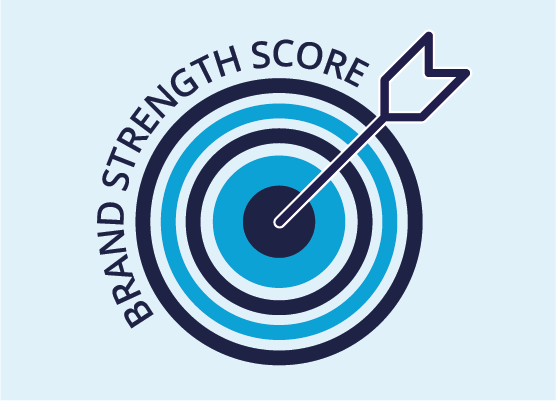We frequently refer to ‘brand values’ as if everyone knows what we mean. It is assumed that there is a general understanding that a brand stands for something and what it stands for must have a value.
These values can be critically important or small inconsequential things but above all they are the things which give the brand its worth and differentiate it from all others. Through these brand values a product or service is enhanced beyond its functional purpose. In this context the brand provides the consumer with more value and this is why they are prepared to pay a premium to acquire it.
Measuring Brand Value and Cash Value
Various research studies have been carried out in consumer markets to determine the premium that people will pay for brands over and above a base line. Measuring the value of brands and assessing the value of intangibles by asking consumers to separate out the brand and place a monetary value on it is difficult because this is not what we do in the real world. In fact, most consumers, when asked to place a monetary value on brands, are in denial about paying a premium just for the name. That is for all the other mugs, not for me.
That said, when people are asked in brand value surveys to place a monetary value on a car (the same car is used in the photographs but different badges are superimposed on the bonnet to suggest it is a different brand) the Volkswagen brand is seen to be worth more than that of Ford while the Mercedes brand has a value above both. In each case, the brand is seen to be worth around 10 per cent of the retail value of the car.
We now want to consider the value of brands in another context – that of a company’s monetary worth if sold on the open market and how this value can be estimated even when disposal is not anticipated. At the outset it is important to draw a distinction between individual brands owned by a company (e.g. Kit-Kat) and a brand which is also the a company name (e.g. Speedy Hire).
Goodwill and the Value of Brands
When a company is sold, it seeks to obtain a value over and beyond that of its tangible assets. Historically this has been referred to as `goodwill’ and was taken to mean the value of the loyalty of the firm’s customers. This is an interesting concept as loyalty is an important component of branding – so already it is clear that there is a strong link between goodwill and brands. After all, a good brand is one which customers insist on by name and for which they are prepared to pay a premium. This loyalty would have a value if the brand was ever sold.
Accountants are now refining their views of goodwill and accept that it extends beyond loyalty. On these grounds goodwill is taken to include other intangibles which enable a company to earn `super profits’ or those profits over and above what could be expected from the tangible assets of the company alone. This concept of goodwill is important as it signifies that it is an asset, namely something which a company controls and which will provide future benefits. The asset of goodwill can be realized by the sale of a company but its very existence implies that it can also be assessed at any time and given an internal valuation – this view departs from the traditional approach which crystallized goodwill only at the time of sale.
Firms have a collection of intangible assets in the form of people (key personnel such as a skilled workforce, managers, scientists), special company procedures, distribution agreements (which keep the product in and the competition out) and patents (which give a product protection over a finite number of years). All these intangible assets have a value and in theory at least could be assessed within goodwill. In practice it is only aspects of goodwill such as patents that have been readily separated out for valuation. But other intangibles can in theory be separated out and one of relevance to this discussion is brands.
The recognition of brands as an asset to the company is not new to firms making consumer products but, hitherto, it has been largely ignored by industrial companies. In effect there has been a failure of industrial companies to recognize that brands do have a value, including the possibility that they also have a value on the balance sheet. However, as already mentioned, that the company name and brand are often one and the same in industrial markets, presents additional difficulties.
Internal valuations of goodwill are the subject of some contention in accountancy circles. Conventionally, it has been accepted that goodwill is something which only arises when a business is sold and until this happens the value of goodwill is not included in balance sheet assets. In this view, goodwill is the difference between the price paid for the business and the value of its net assets at that time.
This view recognizes three components to goodwill. Two of them are of little importance to us here. The first includes any benefits which the company possesses, perhaps because it has a monopoly position or because it occupies a particular niche which others would find difficult to enter for legal or technical reasons. The second component arises from the fact that accountants find it difficult to precisely value all the identifiable assets and so there will be some over or under valuation which enters into the equation. It is in the third component of goodwill, the value of separately identifiable intangible assets, that our interest lies as it is here that any value attached to brands would fit – but so too would any value that could be recognized in a company’s distribution routes, key personnel or customer lists. Up to recently, all these things have been lumped together as it has been deemed too difficult if not impossible to separate them from each other and the other components of goodwill.
Assessing the Value of Brands
Over the last few years there have been many listings of the value of brands. One of the most famous is carried out by Interbrand. This annual research study of the world’s top 100 brands assesses values on a variety of issues such as strategic brand management, marketing budget allocation, marketing ROI, portfolio management, brand extensions, M&A, balance sheet recognition, licensing, transfer pricing and investor relations. No one is surprised that Apple is a leader but it is more difficult to see how Toyota has a brand value greater than Mercedes-Benz. I show the results from the 2020 survey in the table below.
The Top 20 World Brands From The Interbrand/Business Week Rankings For 2020
| Brand Rank 2020 | Brand Name | Brand Value ($ billion) |
|---|---|---|
| 1 | Apple | 323 |
| 2 | Amazon | 201 |
| 3 | Microsoft | 166 |
| 4 | 165 | |
| 5 | Samsung | 62 |
| 6 | Coca-Cola | 57 |
| 7 | Toyota | 52 |
| 8 | Mercedes-Benz | 49 |
| 9 | McDonald’s | 43 |
| 10 | Disney | 41 |
| 11 | BMW | 40 |
| 12 | Intel | 37 |
| 13 | 35 | |
| 14 | IBM | 35 |
| 15 | Nike | 34 |
| 16 | Cisco | 34 |
| 17 | Louis Vuitton | 32 |
| 18 | SAP | 28 |
| 19 | 26 | |
| 20 | Honda | 22 |
The reason that measuring the value of brands becomes contentious is that brands are increasingly being recognized as an asset and their value is being included in company balance sheets. In other words they were given special status and not treated as part of the goodwill.
Grand Metropolitan was one of the first companies to recognize this potential when, in August 1988, it arrived at an assessment of £565 million in respect of the brands, such as Smirnoff Vodka, it had acquired during the previous three years. This was followed shortly in November of that same year by Rank Hovis McDougall who capitalized its internally created brands, (ie not ones which had ever been purchased for cash) such as Bisto, Hovis and Mr Kipling, placing a value on them of £678 million. The significance of this act can be seen when it is set against the company’s net assets at the time which were only around £300 million.
In the case of RHM or Cadbury Schweppes it is easy for us to see how one of the brands could be spun off and sold to another company without any disturbance to customers. As long as the brand continues to deliver the same qualities in terms of the product and its surround, most customers will not care who owns the factory. But what of a situation where the brand is the company, as in many business-to-business or industrial firms? Here the brand and the company are intertwined and because they are inseparable, one cannot easily be sold without the other.
Problems of Capitalizing the Value of Brands
Brands are vulnerable in being dependent on such intangibles as people’s perceptions of them. Building these perceptions can take many years as reputations are earned by repeated proof that a brand justifies its position. The perceptions can, however, be destroyed overnight. Perrier’s reputation took an embarrassing blow in 1990 when a North Carolina study reported having found benzene in the water. Source Perrier shifted from explanation to explanation on the issue, finally stating that it was an isolated incident of a worker having made a mistake in the filtering procedure and that the spring itself was completely unpolluted. The incident was the cause of the recall of 160 million bottles of Perrier. Imagine that you were in the process of buying Perrier at the time; it would surely have caused you to want to knock a few pound of its price.
The capitalization of a company’s brand value on the balance sheet is therefore contentious as it requires the brand to be separated out from the other intangibles and, as in the case of the Perrier problem, the value can melt away quickly. So, whether or not the value of a brand can be separately assessed realistically, remains a problem of confirming or reassessing its value each year. Similar problems face accountants in the valuation of other assets such as property (whose value can also fluctuate). The difference in the case of brands is the lack of an efficient market for them. The procedures and practices of valuation in this area are not yet agreed.
Keep Building the Brand – But it may not be Time to Capitalize Yet
Brands clearly have a value to the companies which own them; the business is worth more because of the position of the brand in its market. As we have seen, the value of a brand has traditionally been regarded as part of goodwill (the extra worth of a business over and above the value of physical assets) and accountants have only valued this at the time a business is sold – up to then it does not appear on the balance sheet – at least in B2B or industrial companies.
In recent years some major consumer brands have been capitalized – a value has been put on the brand and included as a balance sheet asset of the company owning the brand. Various approaches to measuring the value of brands have developed but are not as yet standardized. Problems remain, including that brand worth can fluctuate quickly (e.g. as the result of some marketing disaster).
We have seen that in many industrial markets there is additional complication to valuing brands; the brand and the company name are often the same. Although, arguably, the two can be separated conceptually, how or whether this should be done in practice is as yet uncertain. It shouldn’t however, stop us building those brands and keep adding value (whatever that may be).
Readers of this white paper also viewed:






